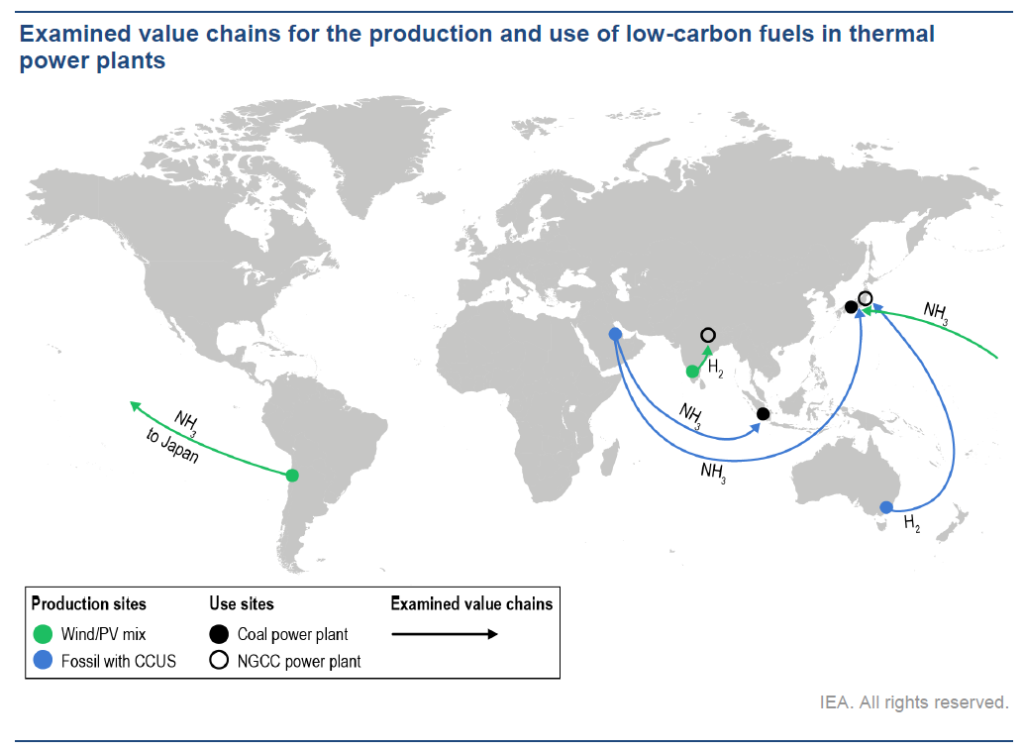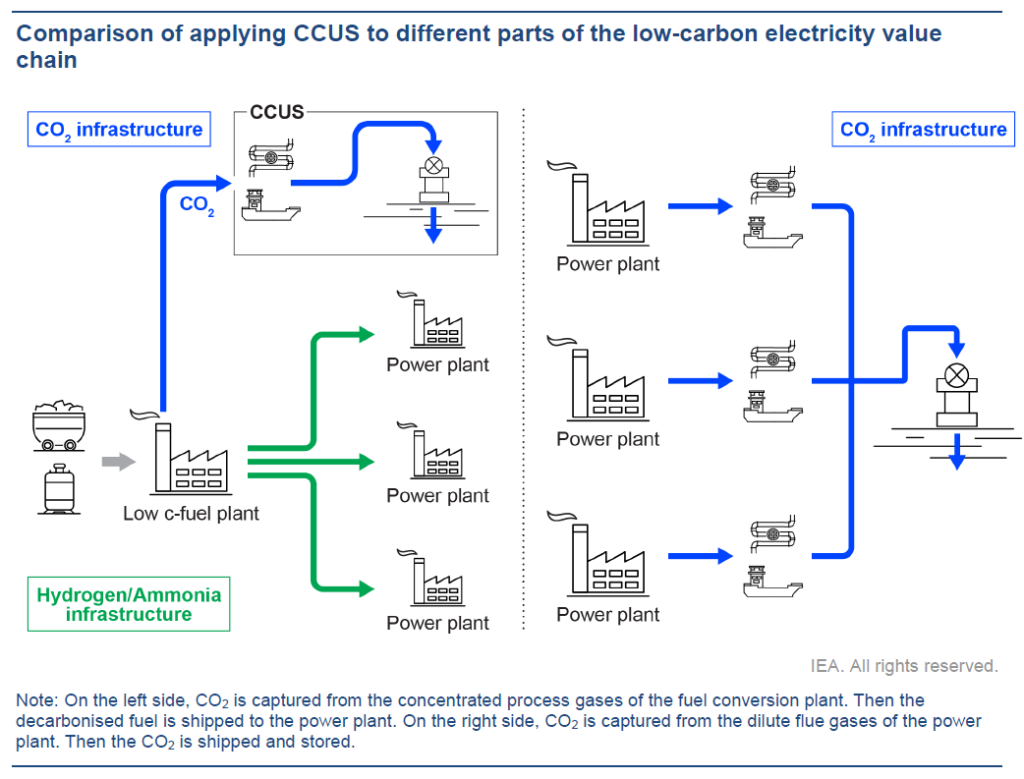New IEA report: using low-carbon ammonia to decarbonise power
By Julian Atchison on October 11, 2021

The IEA’s latest report is hot off the presses. The Role of Low-Carbon Fuels in the Clean Energy Transitions of the Power Sector forecasts a significant role for low-carbon hydrogen and ammonia in decarbonising the power sector, and highlights the promising results of co-firing trials to date (both coal power plants and gas turbines).
The report also outlines some key next steps to enable the widespread use of these low-carbon fuels.
End-user confidence/certification is critical
Going forward, standards are needed to create end-user confidence towards fuels that are carbon-free at the point of consumption, but might produce significant GHG emissions during production, transport and final distribution. For example, switching from coal to unabated fossil ammonia can double life-cycle GHG emissions, and even triple them in the case of switching from natural gas to unabated fossil hydrogen.
Executive Summary, The Role of Low-Carbon Fuels in the Clean Energy Transitions of the Power Sector, IEA, October 2021
Versatility & diversity of supply routes and technology pathways a must
A diverse mix of supply locations and technologies can help ensure secure supplies should producers struggle to meet rapidly growing demand. Costs for renewables and the electrolytic route are more predictable and can help to balance possible disruptions in the supply and price swings of natural gas and coal, which affect the production costs of the fossil fuel with CCUS route.
Low-carbon hydrogen and ammonia production can be kick started in places where production can build on existing infrastructure and demand. There are also possibilities to integrate the electrolytic and fossil fuel with CCUS processes into a hybrid plant that can offer increased efficiency and potentially lower capital investment requirements.
If the biomass feedstock is sustainably produced, carbon-negative hydrogen and ammonia can be produced by capturing by-product CO2 from a biomass conversion plant, a particularly interesting option in high-price carbon jurisdictions.
The overall strategies and policies to incentive low-carbon fuels should be kept open for different technology options as long as basic sustainability criteria are met. This is likely to increase competition and accelerate cost reductions, while increasing diversification and security of supply.
Executive Summary, The Role of Low-Carbon Fuels in the Clean Energy Transitions of the Power Sector, IEA, October 2021
Important role in decarbonising young thermal power generation fleets
Low-carbon fuels can play an especially important role in countries or regions where the thermal fleet is young, or when the availability of low-carbon dispatchable resources is constrained. In these settings, they can allow existing
Executive Summary, The Role of Low-Carbon Fuels in the Clean Energy Transitions of the Power Sector, IEA, October 2021
assets to continue operating even when climate regulations are tightened, thereby diminishing the risk of creating stranded assets. This is particularly the case in the East and Southeast Asia.
Possible role for upstream CCUS
Applying CCUS at the fuel production stage (upstream) to facilitate the co-firing of low-carbon ammonia and hydrogen can have several advantages over direct retrofitting of a thermal power plant. They include:
-lower cost CO2 capture opportunities due to a more concentrated CO2 stream,
-the potential to locate new production facilities near CO2 storage resources or CO2 utilisation facilities (reducing transport infrastructure requirements), and
-a more attractive business case for CCUS infrastructure investment where this investment can underpin the supply of low-carbon hydrogen or ammonia to meet growing demand from a large number of customers (reducing commercial risk and creating economies of scale).
Technical options for decarbonising thermal power plants, The Role of Low-Carbon Fuels in the Clean Energy Transitions of the Power Sector, IEA, October 2021

The report also provides detailed summaries of hydrogen and ammonia co-firing R&D to date, examines three case study supply routes and provides detailed LCOE analyses for a range of technology pathways. Download the full pdf here.